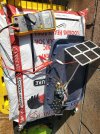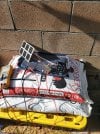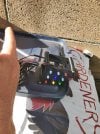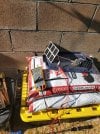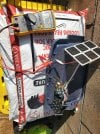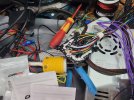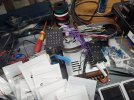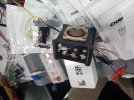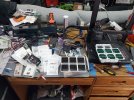You have to be careful with the far red, infrared, not too much. It'll cause the plants to stretch too much.
I may possibly want my plants to stretch? The SUN, is loaded with IR. I specifically use Red, just for the stretching aspect.
Though an 1150w DE Gavita HPS has such powerful IR, it will roast plants at anything less than 3 feet, and 40 inches or a bit more, may be better.
And if one uses a 5500k-6000k Halide, it also has so much Blue, it will greatly counteract the stretch, even though Halide, in reality has as much, or more far red than an HPS, but is also geared more towards the Blue Spectrum, but less total photons, thuse why HPS will produce more.
What I like to do is for maximum production, and taking advantage of different spectrums.
I start seedlings under 1000w Hortilux Blue-5500k, or 1000w MMS-6000k. 20 inches from canopy. I let the seedlings grow into the light intensity. I also have very good fresh air exchange. More than they will ever use. Fan on slight breeze 24/7. Veg Light Duration 24/0. Every 4 days lights out 4 hours to let equipment/mainly bulbs cool off.
Seedlings are also in 36oz Solo Cups. I like big root balls.
Depending on if I can determine M/F, if I cannot, and they need larger containers, I will up pot to at least 1 gallon Medium, as I do not want anywhere near rootbound.
If I know F/M, I will up pot to 5 gallons.
I also Measure how far the light is, from th tops of the plants, and considering they will be in taller/larger containers, I will raise the light back up to match to original distance before transplant, so they will be right back at home with the same light saturation.
I will veg them for however long, and 7-10 days before flip, I switch out to a 1000w Hortilux HPS, and say I am growing a 10 weeks flowering strain, I will use the HPS for 21 days after flip, when on 22nd day, I switch back to the 1000w Halide.
If one is growing a super compact slow growing Indica type, one might start with 1000w HPS, from the start, and then 3 weeks after flip, use a Halide.
Halide is also way cooler than an HPS. HPS has to be 20% higher up.

